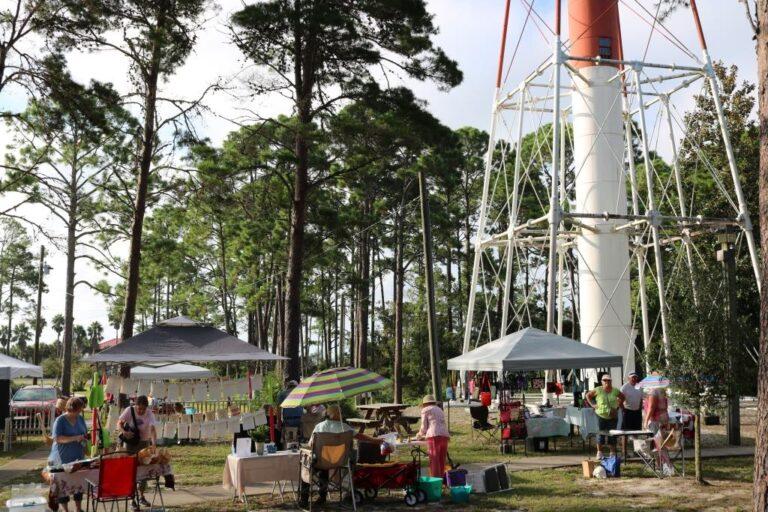Legacy Post Disclaimer
This is a #Legacy post imported from The Apalachicola Time’s previous platform. If you’re experiencing issues with this article, please email us at news@nevespublishing.com.
City backs creation of Black history museum
By summer of 2023, Apalachicola could have a museum devoted to
African-American history and culture, provided a state grant for funding come
through.
At a special meeting Monday evening, city commissioners voted
unanimously to devote $250,000 in matching monies to the project, which is
seeking a $1 million African-American Cultural and Historical grant from the
Florida Department of State.
A $500,00 grant request would have required no local match,
but grants above that require a 50 percent match of the difference. The match
money would be taken from what is expected to be an additional $333,000 budget surplus for the 2020-21 fiscal year
The addition of the Apalachicola Museum of African-American
Culture and History, will enable the city to tell the story of a vital segment
of our ancestors who have been left out of the narrative, reads the grant
application, authored by Apalachicola native Willie Tolliver, now on
leave as a social work professor at Hunter College in New York City, together
with Valentina Webb, long active in a leadership role on the Hill, and Leo Bebeau,
the citys finance director.
The two-story 5,000-square-foot structure would sit next to
the current Holy Family Senior Center, at 220 Dr. Frederick Humphries Street.
The exterior of the new building would be designed to complement the centers century-old
Spanish-style structure, complete with a red tile roof.
A newly-created local nonprofit, the North Florida African
American Corridor Project, would assist with program development once the
project is completed.
The overall Apalachicola history narrative often omits the
history of the African American population of the city and the broader region,
reads the grant. The official historic sites contribute to this erasure. A
marker outside of a restored downtown cotton warehouse states that Apalachicola
was once the largest cotton port in the south, yet no mention is made of the
enslaved population that not only produced the crop, but outnumbered whites
during the cotton boom of the 1830s.
The application also makes reference to the state-owned Orman
House Museum. Absent from official literature is that the Ormans were the most
prominent slave-owning family in the county. Adjacent to the restored main
house Is the tumbledown remnants of slave quarters, on the verge of ruin, it
reads. The official Orman House narrative describes lavish dinners on the fine
china on display In the house, yet nothing about the hands that served the food
and set the table; no window into how the Ormans’ lives were Intertwined with
those of the people they enslaved – whose numbers exceeded their own.
The grant application foresees the proposed museum as both
a symbolic and physical hub for the African American community in Apalachicola,
as well as a learning opportunity for other citizens and visitors alike to
learn the full history of Apalachicola
.The community pride that would result
from this effort would be much needed and well deserved.
At the meeting, Webb outlined how the Holy Family location
made the most sense for the proposed museum, as it will anchor a proposed
series of sidewalk and lighting improvements on the Hill, as well as an Apalachicola
Historic Interpretative Displays and Black History Trail project, which has emerged
highly ranked for a state grant.
As recently as the 1960s, the Hill was a vibrant area with family
homes, a thriving business district, a Black high school, and several churches
and fraternal organizations, all of which contributed to an extended social
life. Today, the community Is under threat, reads the museum grant application.
After decades of economic disinvestment and the collapse of the seafood
industry, more than 75 homes on the Hill are vacant. Some are uninhabitable and
abandoned. Others have been purchased and restored by newcomers to the
neighborhood, often from other cities, whose presence is now driving the
economy and gentrification.”



Meet the Editor
David Adlerstein, The Apalachicola Times’ digital editor, started with the news outlet in January 2002 as a reporter.
Prior to then, David Adlerstein began as a newspaperman with a small Boston weekly, after graduating magna cum laude from Brandeis University in Waltham, Massachusetts. He later edited the weekly Bellville Times, and as business reporter for the daily Marion Star, both not far from his hometown of Columbus, Ohio.
In 1995, he moved to South Florida, and worked as a business reporter and editor of Medical Business newspaper. In Jan. 2002, he began with the Apalachicola Times, first as reporter and later as editor, and in Oct. 2020, also began editing the Port St. Joe Star.